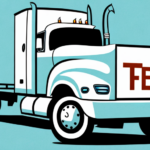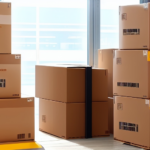Where Can I Drop Off? Here Are the Best Options
Knowing where to drop off unwanted items is crucial for responsible waste management. Proper disposal not only helps keep the environment clean but also benefits our communities as a whole. In this article, we will explore the best places to drop off your unwanted items and discuss why it is essential to do so.
Why You Need to Know Where to Drop Off Items
Improper waste management can lead to severe health and environmental issues. Disposing of your unwanted items in the right place ensures that they do not end up in landfills, polluting our soil and water. According to the Environmental Protection Agency (EPA), over 150 million tons of trash is generated each year in the United States alone. Proper disposal helps conserve natural resources, reduce greenhouse gas emissions, and promote a cleaner and healthier planet.
How to Determine What Items Can Be Dropped Off
Before dropping off items, it is essential to understand what can and cannot be disposed of. Check if the items are hazardous or contain chemicals that may harm the environment. Many drop-off locations do not accept hazardous materials such as batteries, light bulbs, and CFLs. Consult your local recycling center for disposal options.
It is also important to note that some drop-off locations may have specific guidelines for certain items. For example, some locations may only accept certain types of plastics or may require that items be sorted by material type. Research the specific drop-off location beforehand to ensure that all guidelines are followed and the items can be properly disposed of.
The Importance of Proper Disposal
Proper disposal of items helps protect our environment and contributes to a cleaner, healthier planet. Drop-off locations are designed to handle specific types of waste, making the process more efficient and effective. By using the right disposal methods, you can help reduce pollution, conserve natural resources, and protect wildlife. Remember, responsible waste management starts with you!
Did you know that improper disposal of electronic waste can be particularly harmful to the environment? Electronic devices contain hazardous materials such as lead, mercury, and cadmium, which can leach into the soil and water if not disposed of properly. Many drop-off locations offer electronic waste recycling programs, which safely extract and dispose of these materials. By recycling your old electronics, you can help prevent these harmful substances from polluting our environment.
Top 10 Places to Drop Off Unwanted Items
Here are the top ten places where you can drop off unwanted items:
- Local Recycling Centers - Most cities and towns have recycling centers that accept various materials such as paper, cardboard, and metal cans. [Learn more]
- Donation Centers - Nonprofit organizations often accept items like clothing, furniture, and household items in good condition. These items can be reused or repurposed. [Goodwill Donations]
- Electronic Recycling Centers - Drop-off centers for electronics and appliances exist to prevent hazardous materials from entering landfills. [Best Buy Recycling]
- Hazardous Waste Centers - These centers accept items such as batteries, old paint, and chemicals that require special disposal procedures to avoid environmental damage. [EPA Hazardous Waste]
- Landfills - Landfills are the last option and should only be utilized if other methods are not available. Ensure they are properly managed to minimize environmental impact. [EPA on Landfills]
- Reuse Centers - These centers accept items that can be reused or repurposed, extending the life of products and reducing waste.
- Clothing Donation Bins - Donation bins can be found in many locations and accept items such as clothes, shoes, and accessories. [Find a List]
- Paper Recycling Bins - These bins accept newspapers, paper bags, and magazines, helping to recycle valuable paper resources.
- Food Composting Sites - Composting sites are available for biodegradable waste, turning organic matter into nutrient-rich soil. [EPA Composting Guide]
- Freecycle - Freecycle is an online platform where people can give away unwanted items instead of throwing them away. [Visit Freecycle]
It's important to note that some items may require special handling or disposal. For example, old mattresses and box springs can be difficult to dispose of properly. Many cities have programs that will pick up these items for a fee or offer drop-off locations. Additionally, some items like prescription medications should not be thrown away in the trash or flushed down the toilet. Many pharmacies and police stations have programs that allow you to safely dispose of these items.
Another option for getting rid of unwanted items is to host a yard sale or participate in a community swap meet. This can be a great way to dispose of items that are still in good condition while also making a little extra money. Plus, you may be able to find some new treasures to take home!
Local Recycling Centers and Their Services
Local recycling centers are a great option for dropping off unwanted items. They typically accept materials such as paper, cardboard, plastic, and glass. Many centers also have special bins for hazardous materials like batteries, fluorescent light bulbs, and electronics. Some communities even offer curbside recycling programs that pick up your materials for disposal.
In addition to accepting common recyclable materials, some local recycling centers also offer services for composting. Composting is the process of breaking down organic materials like food scraps and yard waste into nutrient-rich soil. By composting, you can reduce the amount of waste that goes into landfills and create a natural fertilizer for your garden.
Another service that some recycling centers offer is the opportunity to donate gently used items. Many centers have a designated area for items like clothing, toys, and furniture that are still in good condition. These items can then be donated to local charities or sold in thrift stores to benefit the community.
Benefits of Donating Items to Charities and Nonprofits
Donating items to charities and nonprofits has many benefits. First and foremost, it helps those in need. Your old belongings can be repurposed or resold, with the proceeds going to those less fortunate. Additionally, you may be eligible for a tax deduction when donating to a charitable organization, making it a win-win situation.
Another benefit of donating items to charities and nonprofits is that it helps reduce waste. Instead of throwing away items that are still in good condition, you can give them a second life by donating them. This helps to reduce the amount of waste that ends up in landfills, which is better for the environment.
Donating items can also be a great way to declutter your home. Instead of holding onto items that you no longer need or use, you can donate them to a good cause. This not only helps others but can also help you feel more organized and less stressed in your own space.
How to Find Donation Centers Near You
Finding a donation center near you is easy. You can search for local thrift stores that accept donations or check out nonprofit organizations in your area. Many cities have online directories that list local charities and donation centers, making it easy to find the right place to donate your items.
Another way to find donation centers near you is to ask your friends, family, and coworkers. They may know of local organizations that accept donations or have personal experience with certain donation centers. Additionally, some businesses, such as grocery stores or community centers, may have bulletin boards or flyers advertising local donation opportunities.
Drop-Off Options for Hazardous Waste Materials
Hazardous waste materials require special disposal procedures. It is crucial to drop them off at designated locations to prevent environmental damage. Many cities and towns have hazardous waste centers that accept materials like batteries, fluorescent bulbs, and chemicals. Check with your local government or recycling center for guidelines on how to properly dispose of hazardous materials.
It is important to note that hazardous waste should never be disposed of in regular trash or recycling bins. This can lead to contamination of the environment and harm to human health. Some hazardous materials, such as electronics and medical waste, may require specialized disposal methods. It is always best to research and follow the proper procedures for disposing of hazardous waste to ensure the safety of yourself and the environment.
Eco-Friendly Ways to Recycle Electronics and Appliances
Electronic and appliance recycling centers help prevent hazardous materials from ending up in landfills. Many of these centers offer eco-friendly recycling solutions that can reduce or eliminate the harmful effects of improper disposal. Contact a local recycling center to learn more about electronic and appliance disposal options.
It is important to note that not all electronics and appliances can be recycled in the same way. Some items, such as batteries and light bulbs, require special handling due to their toxic components. It is crucial to properly dispose of these items to prevent harm to the environment and human health. Additionally, some electronics and appliances can be refurbished and donated to those in need, providing a sustainable solution to waste reduction. Consider researching local organizations that accept donations of gently used electronics and appliances.
How to Prepare Your Items for Drop-Off
When preparing your items for drop-off, it is essential to follow certain precautions. Remove batteries from electronics to prevent leaks, and make sure your items are clean and dry to avoid contamination. Check with the drop-off location for specific guidelines on how to prepare your items for disposal.
It is also important to sort your items before drop-off. Separate recyclable materials from non-recyclable ones to ensure that they are disposed of properly. Some drop-off locations may have separate bins for different types of materials, so it is helpful to know what items are accepted and how they should be sorted beforehand. By taking these extra steps, you can help make the drop-off process more efficient and environmentally friendly.
Tips for Choosing the Best Drop-Off Location
When choosing a drop-off location, consider the type of items you need to dispose of. Do your research and find a location that accepts the materials you need to dispose of. Check their hours of operation and make sure they are conveniently located. Also, ask if they have any special requirements or guidelines for drop-off, such as preparation procedures or minimum weights.
What to Expect When Dropping Off Items
When dropping off items, you can expect friendly staff who are willing to answer questions and help with the disposal process. Many locations have different bins or areas for specific materials, so make sure to follow any instructions given to you by staff members.
Common Mistakes to Avoid When Dropping Off Items
One of the most common mistakes when dropping off items is not properly preparing them for disposal. Always follow the guidelines provided by the drop-off location to ensure your items are processed correctly. Do not mix hazardous materials with non-hazardous ones and do not overload bins with heavy materials that can damage them. Also, make sure to dispose of items only at designated drop-off locations.
Conclusion: The Importance of Responsible Waste Management
Responsible waste management is critical for protecting our environment and ensuring the health and safety of our communities. By knowing where to drop off unwanted items, you can contribute to a cleaner and healthier planet. Use the resources available to you and practice eco-friendly disposal methods whenever possible. By working together, we can make a positive impact on the world around us.




















